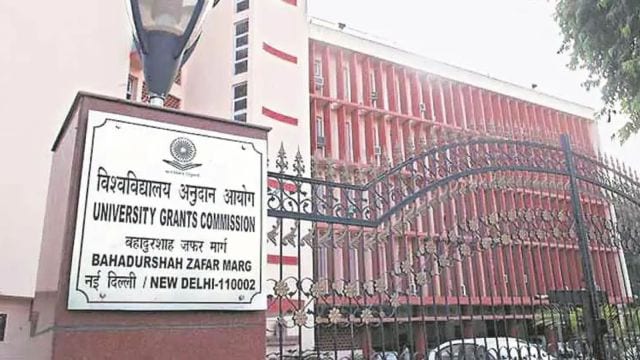UGC drafts guidelines for biannual admissions, multiple entry-exit, flexibility of degrees and more
As per new guidelines, irrespective of the disciplines taken by a student in class 12 or in UG, a student is eligible for admission in any discipline of UG programme or PG programme if the student qualifies the national level or university level entrance examination in the discipline of UG/PG programme.
 A student has to earn a minimum of 50 per cent of total credits in a discipline to earn an undergraduate degree with a major in that discipline. (Representative image/ file)
A student has to earn a minimum of 50 per cent of total credits in a discipline to earn an undergraduate degree with a major in that discipline. (Representative image/ file)The University Grants Commission (UGC) on December 5 announced the draft regulations, which are being set as the minimum standards of instruction for the grant of undergraduate degree and postgraduate degree.
These new regulations will introduce greater flexibility, remove disciplinary rigidity, bring in inclusivity, and multidisciplinary learning opportunities for students. This change will facilitate biannual admissions for higher education institutions (HEIs) if they are prepared to introduce them, allowing students to enroll twice a year. The regulations incorporate provisions for multiple entry and exit, recognition of prior learning, and the flexibility to pursue two UG/PG programs simultaneously.
“We have also decoupled eligibility for UG and PG admissions from the rigid discipline-specific requirements of school education. Under these regulations, students can to choose study in any programme irrespective of their past disciplinary qualification if they demonstrate their competency by clearing the relevant entrance examinations. Recognising the diverse learning modes promoted by NEP 2020, these regulations provide autonomy to HEIs to determine student attendance requirements, ensuring they align with evolving academic needs,” said UGC Chairperson, M Jagadesh Kumar.
Students will now have the option to earn 50 per cent of their credits in their major discipline, while the remaining credits can be allocated to skill development, apprenticeships, or multidisciplinary subjects, fostering holistic development. “With these reforms, we ensure that Indian higher education evolves to meet global standards while staying rooted in inclusivity and adaptability to diverse learner needs,” Kumar added.
Major changes in the draft UGC guidelines:
— Biannual admission has been facilitated for higher education institutes (HEIs) prepared to handle biannual admissions and may admit students twice a year, in July/August and January/February.
— Provisions for multiple entry and exit, continuous formative assessment, recognition of prior learning, pursuing two UG/PG programmes have been made in the draft regulations.
— Irrespective of the disciplines taken by a student in class 12 or in UG, a student is eligible for admission in any discipline of UG programme or PG programme if the student qualifies the national level or university level entrance examination in the discipline of UG/PG programme.
— Considering the diverse learning modes and holistic and multidisciplinary learning opportunities suggested by NEP 2020, HEIs shall decide on the minimum attendance requirement of students in different programmes with the approval of their statutory bodies.
— A student has to earn a minimum of 50 per cent of total credits in a discipline to earn an undergraduate degree with a major in that discipline. For the remaining 50 per cent credits, the students may choose skill courses, apprenticeships and multidisciplinary subjects.
— The duration of an undergraduate degree shall be either three or four years, and a postgraduate degree shall normally be either one year or two years. However, the duration of an undergraduate degree can be shorter or longer.
Key provisions of the Accelerated Degree Programme (ADP) and Extended Degree Programme (EDP) are as follows:
a. ADP and EDP are applicable at the undergraduate level only.
b. HEIs can earmark up to 10 per cent of sanctioned intake for ADP with no cap for EDP.
c. The Committee constituted by the HEI will evaluate the credit-completing potential of a student based on their performance in the first or the second semester and give its recommendations
d. Students shall have the option to choose ADP/EDP either at the end of the first semester or the second semester and not beyond that.
e. In the ADP/EDP, students will follow the same curriculum content and total credits prescribed for the programme for a standard duration. The only change will be in the duration of the programme. The number of courses to be completed in each semester will be more or less according to the duration opted by the students.
f. The degrees of ADP and EDP will contain a self-contained note stating that the academic requirements required in a standard duration have been completed in a shortened or extended duration
— Students completing a four-year undergraduate degree (Hons/Hons with Research) in relevant subjects — level 6, e.g. BSc (Hons) in Physics, BSc (Hons) in Biology, BSc (Hons) in Mathematics, BE, BTech — will be eligible for the two year/ four semester postgraduate programme (level 7, e.g. ME, MTech etc).
- 01
- 02
- 03
- 04
- 05































